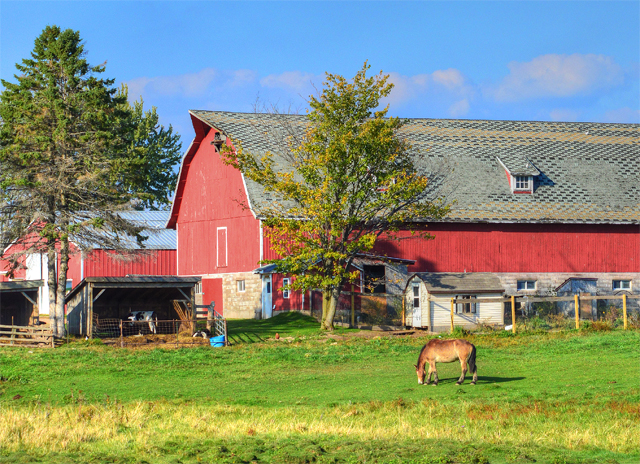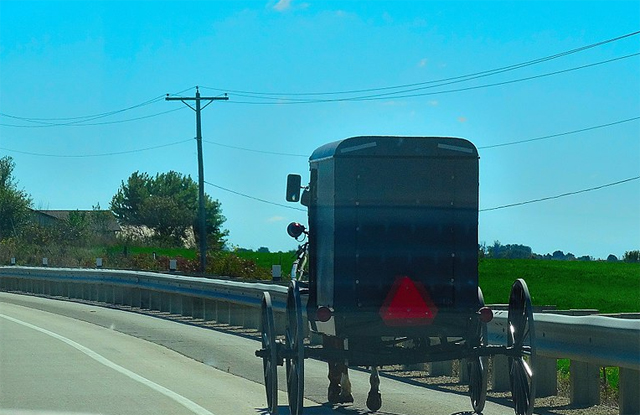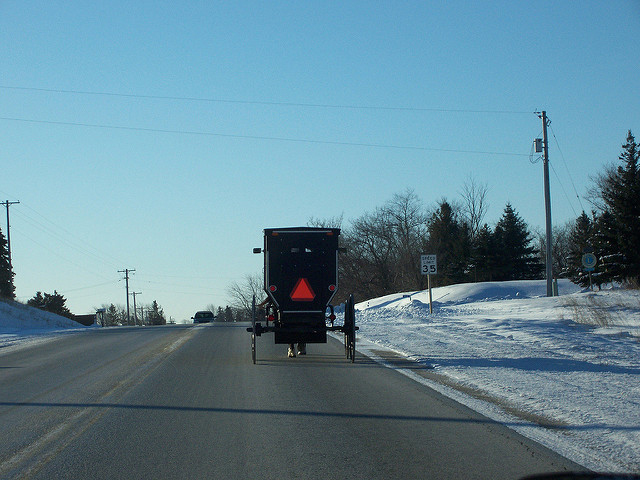An anti-Amish ordinance failed to pass in Wisconsin last Tuesday, in large part due to the vociferous, pro-Amish objections raised by local voters.

The daily newspaper for the town of Wisconsin Rapids explained the controversial proposal several days before it was due to be brought up for a vote by the Wood County Board of Supervisors. Bill Winch, a member of the board, explained to the newspaper that he had helped draft the measure because he was concerned about the high number of fatal crashes on county roads involving Amish buggies. Nine people have been killed in crashes with horse-drawn vehicles since 2009. He believed his measure would better regulate the Amish and their buggies to cut down the rate of accidents. Fundamentally, the proposed ordinance would have treated the operators of horse-drawn buggies and wagons exactly like the drivers of motor vehicles.
On the surface it all sounded reasonable, but the proposal generated controversy because of the numerous regulations that the Amish would have been required to follow. Buggy operators would have been required to be at least 16 years of age and to get driver’s licenses from the state division of motor vehicles, the same as motorists. Obtaining the licenses would have required them to take a written test showing good knowledge of the motor vehicle laws. The proposed ordinance would have required the Amish to purchase vehicle liability insurance, wear seat belts in their buggies, install windshields and side windows, add rear-view mirrors, put in child safety seats, and so on.

Prof. Mark Louden, a specialist in Amish culture and religion at the University of Wisconsin-Madison, told the paper that if the measure were to be passed and the Amish started being ticketed by the police for not obeying it, they would doubtless move out of the county en masse. They would strongly object to the purchase of insurance and to obtaining a driver’s license—those requirements would violate their beliefs. After reading the proposed ordinance, he said, “All I can think of is if they pass this, they don’t want the Amish in Wood County.”
Lance Pliml, Chairman of the Board, said the ordinance was originally intended to address the perceived need for proper lighting on Amish buggies, and to require that buggy operators have some sort of safety education. He said that Amish children under 10 years of age have operated them and have failed to understand even what a stop sign at a highway intersection means. He did express the opinion that the ordinance had grown beyond that—into a “tough sell,” he admitted.

At the board meeting on Tuesday, December 19, citizens spoke out strongly in opposition to the proposed measure, according to a news story about the meeting. One resident threatened to contact the American Civil Liberties Union and to sue the board if it passed the bill. Others called the proposal “stupid,” “invasive,” “far-fetched,” and the result of bigotry and prejudice. After board member Winch made a motion to vote on his proposed ordinance, none of the other 18 board members would even second it, so it died on the spot.
“I didn’t mean to cause all of this controversy,” Mr. Winch said. “I do not dislike the Amish.”